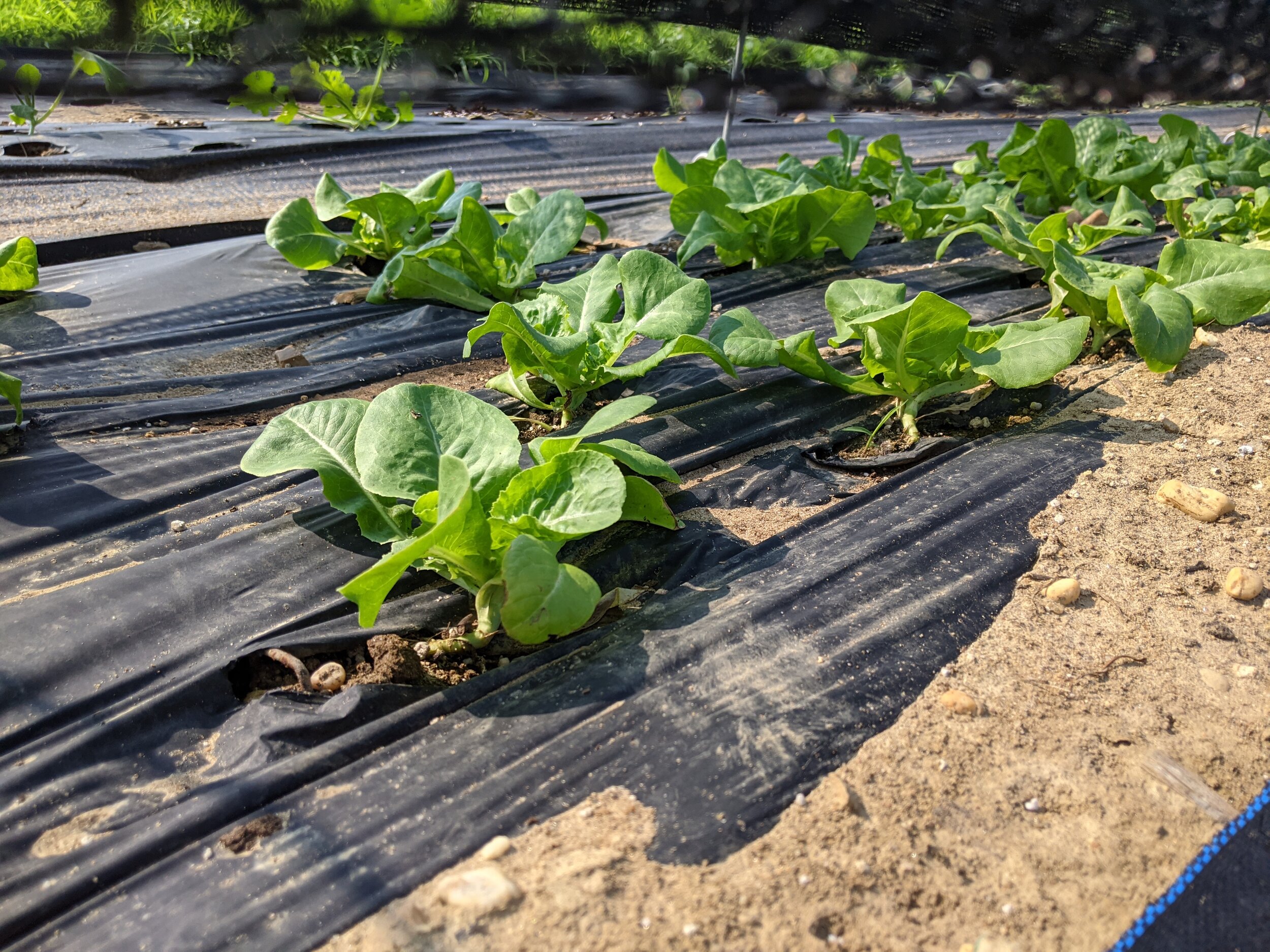Transplanting to the Garden
By: Marie Fingerhut
Whether you start your own vegetable plants from seeds indoors or purchase them from a nursery or catalog you will eventually need to move them outdoors! Follow these tips to help ensure a successful move to your permanent outdoor garden location.
Photo: Recently transplanted lettuce. Weed block fabric surrounds the seedlings.
Timing
In New Jersey you can plant potatoes, onions, kale and collards, lettuce, broccoli and cauliflower, cabbage, and snow peas in your prepared garden (see lessons on Soil Preparation and Where to Locate your Garden) in late April to early May. You need to wait until after the last frost date to plant warm season vegetables such as tomatoes and peppers. The last frost date is the average date of the last frost in spring, and it of course depends on where you live. This information is available on multiple sources such as websites and local garden centers. Remember, last frost dates are estimates and are not always exact or foolproof. It is important to pay attention to local weather forecasts as well as the last frost date when determining the right time to set out your seedlings. As a rule, we wait until after May 15th to plant warm season vegetables here in central NJ.
Hardening Off
You can acclimatize seedlings that have been raised indoors to the harsher outdoor conditions by setting them outside each day and gradually increasing the length of time outdoors. Place plants in a partially protected place for about 8 hours the first day and lengthen the time each day for about a week. This process is referred to as “hardening off” and it reduces transplant shock.
Photo: Tomato transplants ready with stakes in the ground. Later, the Florida Weave was used to trellis the tomatoes.
Some Additional Tips
Here are a few additional tips for a successful transfer:
· Transplant in the late afternoon, on a windless (preferably cloudy) day.
· Don’t let plant roots dry out while waiting to be placed in the garden. Watering the plants several hours before transplanting will help prevent roots from drying out.
· Place plants into the soil at a slightly deeper level than they were in their pots.
· When planting tomatoes, the soil level should come just under the first pair of leaves. If your tomato plants are very tall you can lay the stems horizontally in a trench leaving just 2 or 3 sets of leaves above ground. You can ONLY do this with tomatoes!
· If your seedlings are in peat pots, the pots themselves can go directly in the ground. Just remember to remove the pot bottom and rim.
· Press the soil firmly but carefully around the base of the plant.
· Water with a weak fertilizer solution or compost tea.
· If windy or cold weather conditions are predicted protect your newly transplanted seedlings with floating row covers, baskets, milk jugs, newspaper etc.… Remember to remove coverings during the day so prevent heat buildup!


